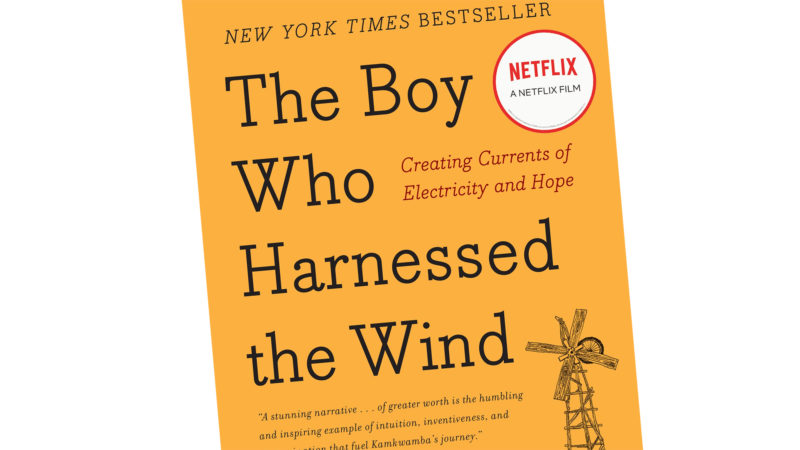The Boy Who Harnessed the Wind
I recently returned home to find my youngest child Henry surrounded by dozens of small pieces of wood scattered all about the kitchen. He was engrossed in the process of building a coin-sorting machine out of popsicle sticks. He demonstrated his creation by rolling different sized coins down the chute with each falling into its appropriate channel. He was still perplexed by the challenge of sorting dimes from pennies, but otherwise had succeeded in his quest.
 Watching Henry do this project for no other reason than the pure joy of building something was a wonderful reminder of the power of curiosity and imagination. I remember my own endless projects as a boy that were often driven purely by my own imagination. Many of my creations did not work; in retrospect, several were probably ill-advised, like when I created my own light-control board for the theater production. I didn’t really understand electricity at that point.
Watching Henry do this project for no other reason than the pure joy of building something was a wonderful reminder of the power of curiosity and imagination. I remember my own endless projects as a boy that were often driven purely by my own imagination. Many of my creations did not work; in retrospect, several were probably ill-advised, like when I created my own light-control board for the theater production. I didn’t really understand electricity at that point.
My experiences of tinkering and projects were a great backdrop to diving into our all-community read, The Boy Who Harnessed the Wind. This is the memoir of William Kamkwamba who as a boy built a windmill out of scraps to provide electricity to his family and the surrounding community. Kamkwamda’s windmill was a truly high stakes project that in the end changed his world. I found myself both relating to the main character’s tinkering while at the same time being awestruck by what he created.
There are so many aspects of The Boy Who Harnessed the Wind that are worthy of discussion. There is the story of a curious and bright boy who overcomes a daunting number of obstacles in pursuit of his dream to build a windmill. There is the deep immersion into Malawi culture, with its tensions between superstitions and emerging technologies. Readers experience the true depth of despair and death associated with the famine that often plagues Malawi and other countries. In the end, however, the book is an uplifting story of the power of one determined individual leading a community to a better place and, in the process, changing the world.
Over the coming months, you will see The Boy Who Harnessed the Wind become the foundation of conversations in classrooms across all three of our divisions. We will study this book as a piece of literature, as a case study in climate science, and an example of creative problem-solving through engineering. All these and many more examples make this a rich text for our students and faculty to explore.
There are many ways for you to make this experience even richer. You can join in by reading the book, discussing it with others at home and in the community, and attending events like the September Monday Books (9/16) meeting featuring The Boy Who Harnessed the Wind. We have an opportunity to use literature to build community and share in the joy of learning. According to the American Library Association, “communities of all shapes and sizes are adopting the concept… [of] people coming together through the reading and discussion of a common book.” At Waynflete, this idea came from (and is being led by) our amazing English Department Chair, Lorry Stillman.
We are excited to see all the ways our school benefits from this experience. You can get a discount on the book at Print: A Bookstore on Congress Street by mentioning you are reading it as part of Waynflete all-community read.



